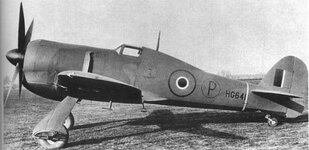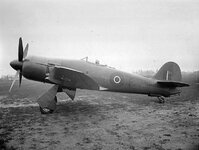southjn1982
Airman
- 64
- Dec 15, 2020
In 1939 Hawker did do tests of a Hurricane using a Bristol Hercules engine (see photo) these eventually led to the Sea Fury and the decision to use the Bristol Centaurus, but how good would a radial-engined fighter based on the Hercules have been? On paper, I think it could have been pretty good, especially for North Africa and the Pacific as well as the FAA the engine was very tough and reliable and was powerful while still being relatively lightweight even by 1939 it was capable of 1300hp and only weighed 100kg more than the Merlin. Does anybody have any good ideas if a Hercules-based fighter would have been useful in secondary theatres and the Fleet Air Arm in the 1939-41 period filling a similar role for the UK as the Wright radials did for the US as the Hercules was 25% more powerful than the engine on the Zero although heavier but was almost as powerful while being 150kg lighter than the BMW801 used on the FW-190.


